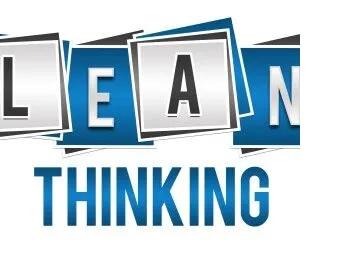Lean process improvement to make your business more efficient and effective

Lean process is a management philosophy and methodology whose integral part is Value Stream Mapping (VSM) to map out all steps for delivering a product or service, and identifying steps that add value, and those that do not. Initially used in manufacturing by the Toyota Production System in the 1950s, It ensures that the process flows smoothly and continuously without delays, and products or services are created based on demand (Pull System), rather than Push System, where they are pushed into the market or process. Lean process improvement recognizes 8 types of waste, and continuously strives to improve in all aspects of the process, eliminating waste, increasing efficiency, and delivering greater value.
Lean encourages constant incremental improvements, and eliminating activities that do not add any value to the customer. Lean process improvement looks at how work moves through an organization and identifies bottlenecks, redundancies, and unnecessary steps that slow down the flow of work. As per Group50 consulting firm, the goal of lean process improvement should be to create more value for customers with fewer resources. The consulting firm has developed 5 Phases of Lean Deployment to provide a roadmap for optimizing business using lean principles, and focusing on the requirements of the future state of the business. These phases are designed by Group50 to guide an organization through the development and implementation of a successful Lean Program.
Group50’s change management framework Business Hierarchy of Needs®̥ includes these 5 steps of lean deployment, which are:
Exploration
Establishing the Foundation
Expansion and Focus
Integration and Reinforcement
Reinforcement and Momentum
These phases are specifically designed by Group50 to guide an organization through the development and implementation of a successful lean program. These steps serve as valuable tools for lean process improvement, and enable management to anticipate and effectively navigate the lean deployment process. Additionally, as per Group50, any lean process should provide the leadership with a clear understanding of the organization’s current state, strengths, and opportunities. Appropriate education about it will provide insight at all levels of the organization.
Business Hierarchy of Needs®̥
An application strategy for various lean tools is needed for proper lean deployment to build confidence, success, and early momentum. For this, Group50’s consultant make use of lean methodologies like Kaizen, Value Stream Mapping, and its proprietary Brown Paper Exercise. Additionally, there should be a Business Hierarchy of Needs®̥ Level-appropriate education plan to deliver training to people in the organization as they become ready to apply lean process improvement. Note that Group50’s Business Hierarchy of Needs®̥ consists of the below three levels:
Level 1: Strategy, Alignment, and Accountability
Level 2: Knowledge Management and Organizational Readiness
Level 3: Implementation and Continuous Improvement
It is also important to observe that lean process improvement and deployment are owned by everyone in the organization, and not by a specific group. Moreover, a lean journey takes time, and the organization should be patient. The deployment should start with small projects in each functional area, demonstrating results and expanding the knowledge base throughout the organization. Group50’s consultants also deliver training and tools, like DMAIC, Kaizen, and Kanban, for planning and executing a lean process improvement strategy.
Remember that process improvement is an ongoing activity. After one process is improved, the process should shift to another area, this will ensure that the organization remains competitive and adaptable. By eliminating waste, lean process improvement can significantly lower operating costs, and foster a culture of innovation and problem-solving in the organization.
Comments